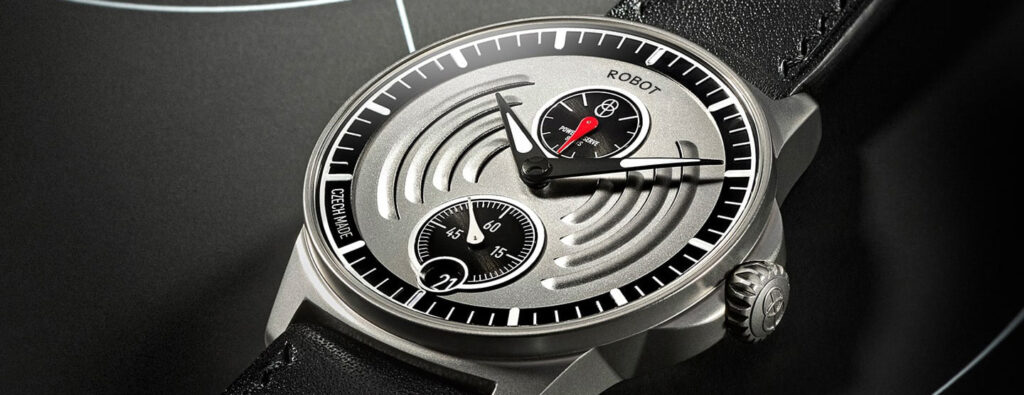Omega
Omega Speedmaster ’57 Rides Back in Time
Omega
Omega Speedmaster ’57 Rides Back in Time
Sun penetrates the giant redwoods that soar endlessly around us, the asphalt flows beneath my wheels, and the steel case of the Omega Speedmaster ’57 Co-Axial Chronograph on my wrist shimmers in the ethereal light. I’m in the Big Basin Redwoods State Park, California, for the launch of two retro-inspired 650cc-twin motorcycles from Royal Enfield.
Watches, motorcycles and California form an iconic trio in the world of motoring pop-culture harking back to the 1960s and 1970s, the days of the three kings of cool: Steve McQueen, Paul Newman and James Dean. It is fitting that Royal Enfield should choose such a location to launch its retro-inspired bikes, and the watch on my wrist is also steeped in nostalgia and motoring heritage. The modern watch is a reinterpretation of Omega’s original manually wound Speedmaster, launched in 1957. For Royal Enfield, it is the rebirth of the original early-1960s Interceptor and Continental GT models.
My journey begins on the parallel-twin Interceptor. I securely fasten the steel-clasp of the Speedmaster ’57, don my jacket, helmet and gloves, and fire up the Royal Enfield. The raucous burble pouring from the twin exhaust-pipes is a pure delight.

Buckling up for a ride through the Big Basin Redwood State Park on the Royal Enfield Interceptor, accompanied by the Omega Speedmaster ’57
Design of The Time
The new Speedmaster ’57 features Omega’s in-house Co-Axial automatic movement, the acclaimed Calibre 9300, and shares fundamental design and ergonomic parallels with the original such as the black dial, absence of crown guards and a brushed bezel with tachymeter scale. Where the original featured three sub-dials, the new iteration has just two, with seconds at 9 o’clock and the placement of both 12-hour and 60-minute counters in the same sub-dial at 3 o’clock. The ’57 is a nod to its ancestor, reimagined for the 21st century.
When the original Interceptor was launched in 1962, it demonstrated a definitive move from the then-British Royal Enfield manufacturer to enter the world of the big-twins. It had previously made countless variations of its famed “made like a gun” 500cc single-cylinder motorcycles – many of them for military use – versions of which are still made by the hundreds-of-thousands today in Chennai, India.

Hugh Francis Anderson prepares to embark on the innaugral ride of the new Royal Enfield 650 Twins – armed with the trusty Omega Speedmaster ’57
California Pleasing
The Interceptor started life as a stripped-down, re-tuned Royal Enfield Constellation that was exported to the USA to please the Californian markets and the desert-racing scene that bourgeoned there and featured in the legendary 1971 motorcycling documentary, On Any Sunday, produced by Bruce Brown and Steve McQueen.
With McQueen in mind, I twist the throttle, firing dust and sand into the air as I career northwards along the Pacific Coast Highway. On one side, steep Sequoia-filled forests; on the other, rolling beaches and the North Pacific. Man, motorcycle and movement become one, and the thumping engine of the Interceptor hums amiably along as I rise into the forests. With a 41.5mm case, the Speedmaster ’57 sits well, and I must stifle the desire to merely gaze at it as I ride along. Here, Omega has achieved something special, making a versatile, usable chronograph that has a robust, masculine feel, whilst maintaining its vintage elegance.
Royal Enfield has also elegantly trodden this fine line. Swapping onto the Continental GT, I’m awakened to another great era of motorcycling: London’s café-racer movement and the Ton-Up boys of The Ace Cafe. Inspired by the first Continental GT built in 1964, which featured a 250cc four-stroke engine and was Britain’s fastest 250 at the time, the modern 650 iteration surprises me beyond belief. While Royal Enfield released a smaller 535cc Continental GT in 2013, it lacked what all former Royal Enfield’s lacked: research and power. In true café-racer style, the GT, with its 47bhp output, is enough to make you feel like you may well be racing.

The new Continental GT
Bike Clocking Speed
I strike out for twisty roads to see if the GT really is the racer it assumes to be. Switchback after switchback, I race through the foothills of the Big Basin Redwood State Park at a blistering rate. I shift weight from one corner to the next with my knees so close to the tarmac I can almost feel it brush by. This café racer is exceptional, and the only motorcycle to offer such raw adrenaline for the price. In this company, the ’57 is in its element. Indeed, before its galactic expeditions, the Speedmaster was once a favoured chronograph among racing and rally drivers. It is noted that even the dials were inspired by the dashboards of Italian racing cars. While the modern Speedmaster Racing Master Chronograph is the official motoring-inspired Omega of old, the modernity of its design elements makes it a wholly contemporary timepiece. For me, the ’57 offers a lot more in vintage racing charm, and I get this sense every time it catches my eye as I lean deep into long left-hand corners.

The Continental GT flying past at full speed










